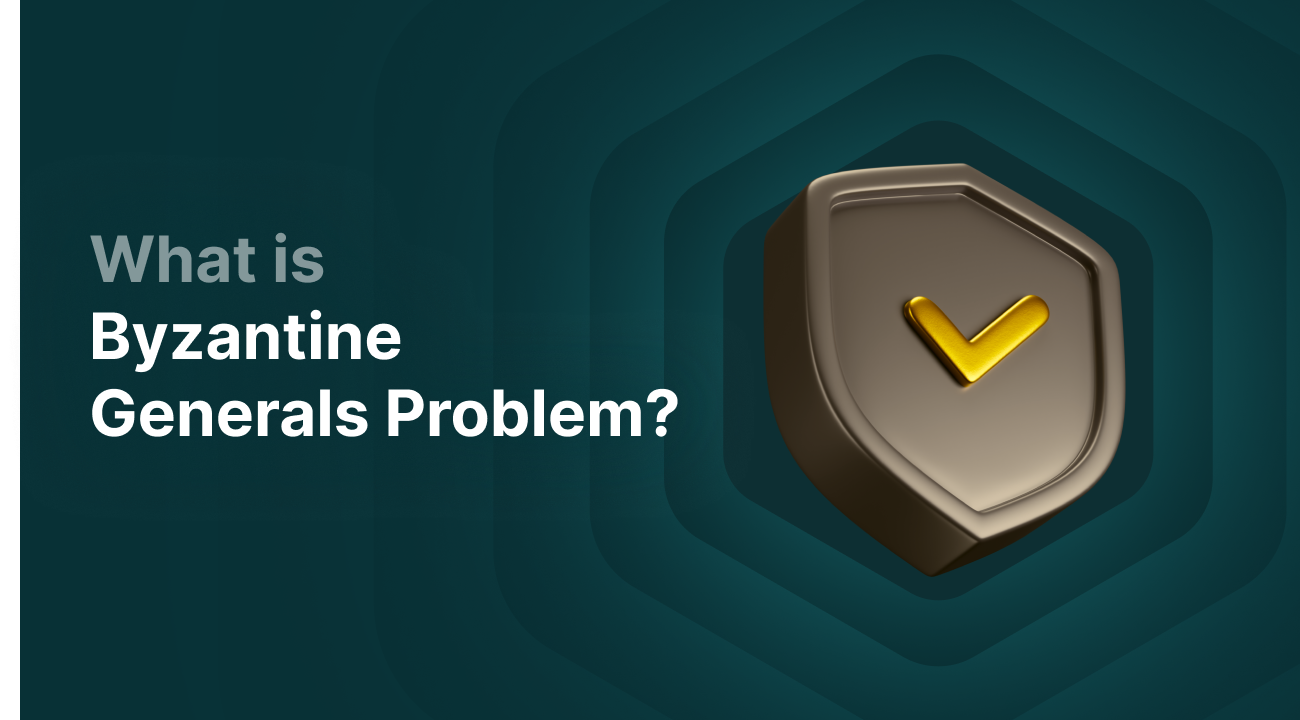What is the Byzantine Generals Problem?

Byzantine Generals Problem Explained
The Byzantine Generals Problem is a theoretical issue that describes the challenges decentralized systems, such as blockchains, face when trying to achieve consensus without a central authority. The Byzantine Generals Problem was introduced in 1982 by Robert Shostak, Leslie Lamport, and Marshall Pease. It was described as a theoretical computer science problem.
The question: how can a network in which no participant can verify the identity and integrity of another participant ensure that they reach consensus by agreeing on a single version?
A very relevant question, since decentralized networks such as Bitcoin and Ethereum place trust in the many participants, rather than in a central entity.
Key Takeaways
-
The Byzantine Generals Problem is a theoretical issue that describes how decentralized systems, such as blockchains, can reach consensus without a central authority.
-
The problem shows that in networks without a central party, reaching agreement is difficult. Each node must make decisions without a guarantee that others are honest.
-
Byzantine Fault Tolerance (BFT) ensures that a system can continue to operate even if some participants are malicious. As long as the majority is reliable, the system remains stable.
Where Does the Name "Byzantine Generals Problem" Come From?
There is an interesting story behind the origin of the name. After the fall of the Western Roman Empire, the Byzantine Empire emerged, the eastern part of the former Roman Empire. Its capital was a very wealthy and influential city, originally called Byzantion. In 330 AD, this city was renamed Constantinople and today it is known as Istanbul.
The Byzantine Generals Problem is about the scenario where the city is under siege, and the generals defending the city must make the same decision, namely to retreat or attack. If one general makes a different choice from the others, it creates weakness in the defensive line and thus a potential defeat.
If one of the generals makes a wrong decision, it is called a "Byzantine fault", which is known in the crypto world as the Byzantine Fault. How do the generals handle this? The generals' aides (the messengers) convey decisions to the other generals. If the majority chooses a strategy, all generals must follow it. This way, the defense line remains intact. If generals still act against the majority, they are considered traitorous generals. Because the majority decides, the system essentially always works.
The Byzantine Generals Problem Applied to Decentralized Systems
The story illustrates the issues decentralized systems, such as blockchains, encounter. If no single person (or node in the crypto world) makes a decision alone (as is usually the case with centralized entities), it is essential to have a very clear method for making decisions without ambiguity.
The problem highlights the challenge decentralized systems face in reaching consensus, because it is not assumed that a single participant can be trusted to transmit accurate information.
Centralized parties do not face the Byzantine Generals Problem because decisions are made by just one party, as well as the distribution of confidential and accurate information. If we look at the financial sector, banks are a perfect example. They are trusted and are expected to handle funds with integrity and store transaction data securely. If a bank commits fraud, government agencies are in place to audit and penalize the bank.
So trust is more placed in a central authority. This offers more efficiency, but also introduces other risks. If the system fails due to a malfunction or a large-scale hack, the entire system shuts down. In decentralized systems, you can attack a node or a node can be malicious, but there are still enough other nodes to exert influence.
What Is Byzantine Fault Tolerance?
The solution to the problem is Byzantine Fault Tolerance (BFT). This is a system on which decentralized systems are designed. It ensures that decentralized systems, such as blockchain technology, continue to operate even if malicious participants are involved.
With Byzantine Fault Tolerance, a majority is enough to reach consensus.
Byzantine Fault Tolerance in Blockchain Technology
Bitcoin is the perfect example where Byzantine Fault Tolerance (BFT) is applied. Bitcoin uses the Proof-of-Work consensus mechanism to verify transactions and add new blocks to the blockchain. For this, miners (nodes) are used. A miner is allowed to add a block containing transactions. This miner is then checked by the other miners. If more than 51% of miners approve the block and thus reach consensus, it is added to the blockchain. In this way, malicious miners can be detected and penalized.
In theory, a malicious miner would need 51% of the computing power used during the mining process. This is also known as a 51% attack. In practice, however, this is nearly impossible, as thousands of miners around the world are working 24/7 on mining new bitcoins.
Final Thoughts
The Byzantine Generals Problem emphasizes the challenge of reaching consensus in a decentralized network where participants cannot trust each other. With the help of Byzantine Fault Tolerance, blockchains like Bitcoin can still operate and remain secure as long as the majority of participants act honestly. This makes decentralized systems more resilient to failures and attacks than many centralized alternatives.




